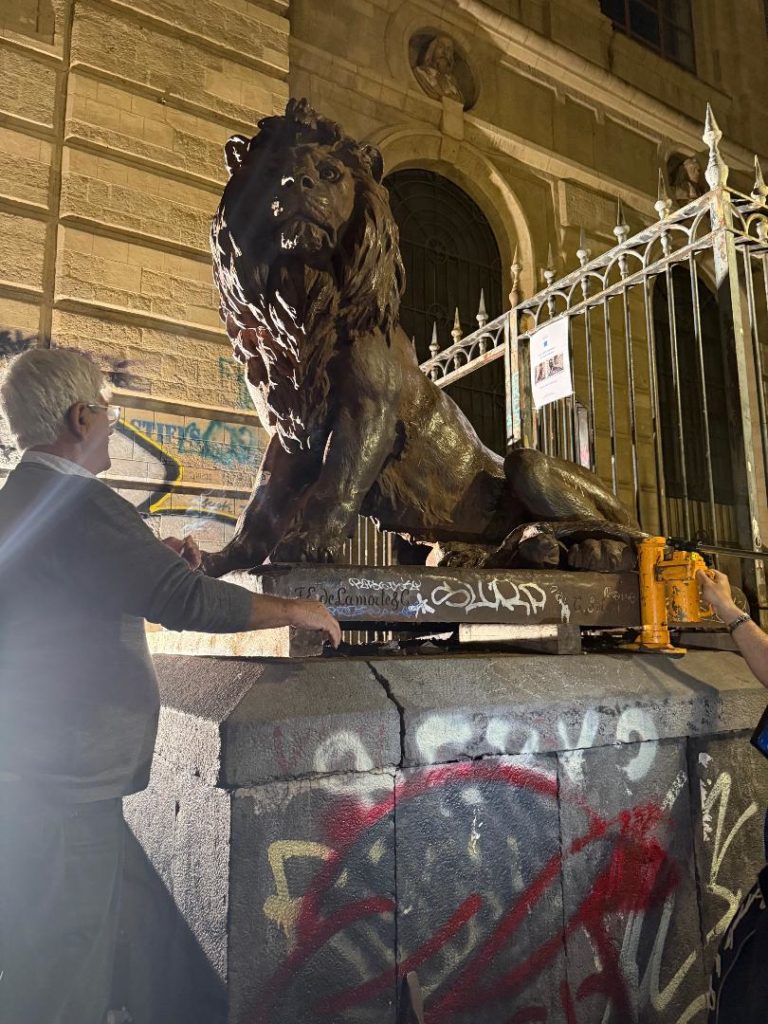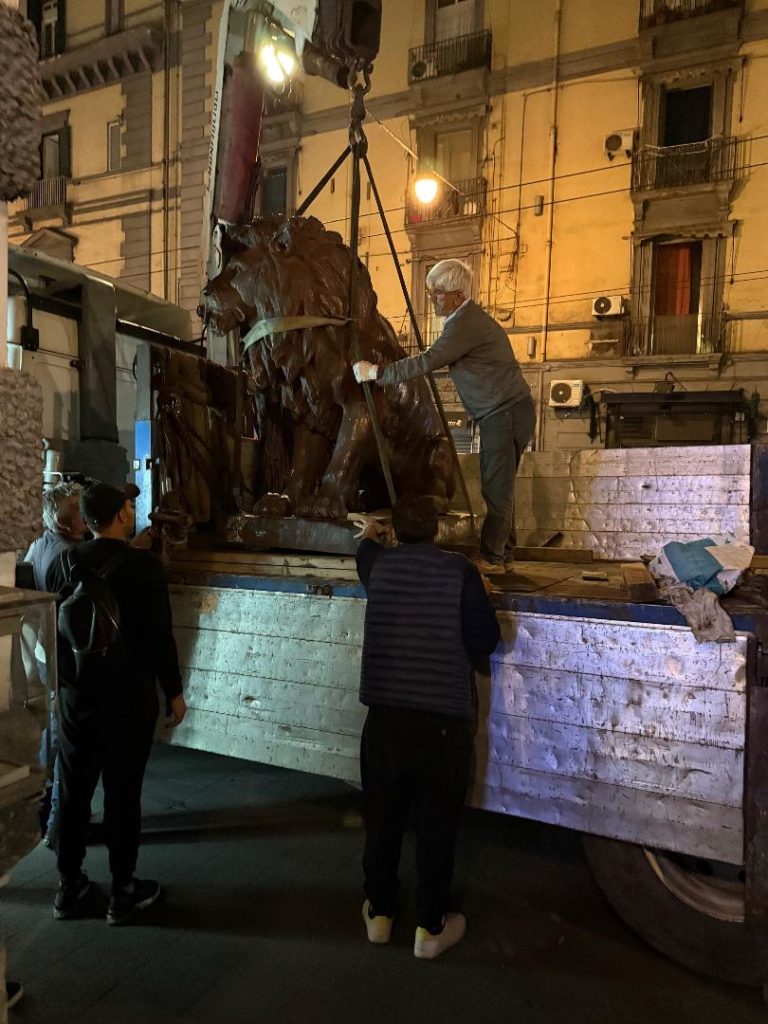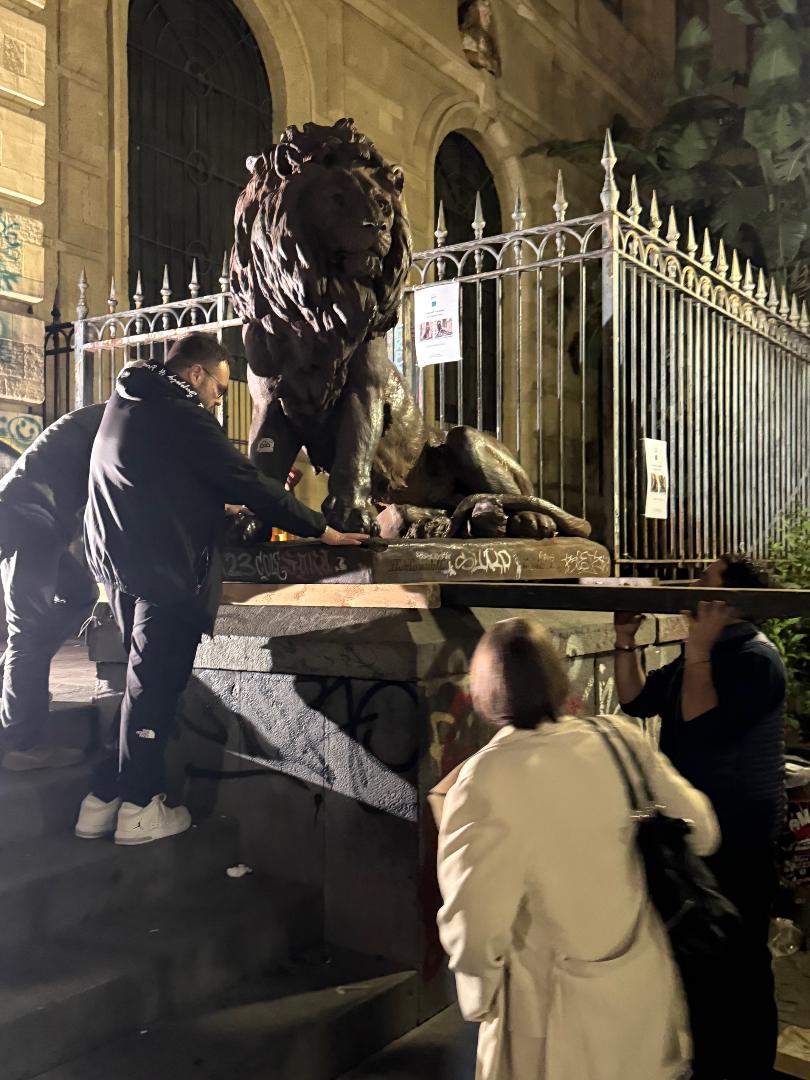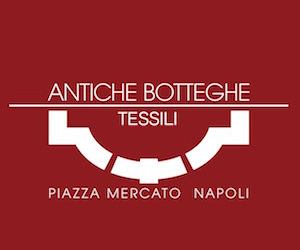
Se vi capita di passare in Largo Nanni Loy, alle spalle di via Costantinopoli, in questi giorni, davanti all’Accademia di Belle arti di Napoli, noterete che non ci sono i maestosi leoni accanto alla scalinata di accesso. Non abbiate timore, le due sculture, realizzate su modelli in gesso di Tommaso Solari, sono state da pochi giorni trasferite nella fonderia Del Giudice per un importante restauro.
L’operazione sarà realizzata grazie all’impegno dell’avvocato Antonino Magliulo, membro del Consiglio di amministrazione dell’Accademia di Belle Arti di Napoli, di concerto con la presidente Rosita Marchese e il direttore Giuseppe Gaeta, e al principale sostegno del Lions Club Napoli Lamont Young, (con il quale l’Accademia ha sottoscritto un protocollo d’intesa).
Dedito alla valorizzazione del patrimonio artistico e morale della città, il Lions Club Napoli Lamont Young ha avviato nel dicembre 2024 una raccolta fondi con il contributo di numerosi partner e amici, in grande parte destinati al restauro delle due opere.
Un restauro, questo, che nasce dopo anni di osservazioni e studi effettuati sotto la supervisione della delegata al patrimonio dell’Accademia di Belle Arti di Napoli l Federica De Rosa e con la collaborazione di Paola Fiore, delegata alla conservazione.
Dal 2018, i leoni sono oggetto di costanti monitoraggi condotti dalla docente restauratrice Merj Nesi, anche in collaborazione con Antonio Del Giudice. Il restauro strutturale, approvato dalla Soprintendenza Archeologica, Belle Arti e Paesaggio per il Comune di Napoli, sarà condotto nella Fonderia Nolana e verrà diretto dalla Nesi con Del Giudice, coordinato da Federica De Rosa.
Quando torneranno a casa, i due leoni saranno ricollocati nella loro postazione e verranno sottoposti a un restauro estetico en plein air a cura della Scuola di restauro dell’Accademia, per sensibilizzare la cittadinanza al rispetto e al decoro dei monumenti pubblici.
Un passo indietro nella storia. Dicevamo che i due leoni dell’Accademia sono una fusione su modelli in gesso di Tommaso Solari, donati all’Accademia. Nei documenti conservati nell’Archivio storico dell’istituzione, si ha traccia dell’avvenuta fusione delle opere in ferro a opera della Ditta de Lamorte nel 1883. I due leoni in ferro andavano a sostituire due leoni, già precedentemente collocati in facciata e in gesso, lì posti sembra in occasione dell’Esposizione Nazionale tenutasi a Napoli nel 1877. Il ministro Fiorelli approvò l’acquisto il 4 novembre 1882, mentre la ditta de Lamorte riceve i modelli in gesso nel febbraio del 1883 e consegna le opere nell’estate dello stesso anno.

Classe 1820, il napoletano Solari era figlio e nipote d’arte: il padre e il nonno furono valenti scultori attivi a Napoli e in altri siti del Regno. Entrò nel Real Istituto di Belle Arti dal 1836 , vinse e frequentò il Pensionato di Roma dal 1842 al 1848, mentre esponeva con successo in esposizioni e mostre, tra tutte quelle borboniche.
Ultimo rappresentante del classicismo naturalistico della scuola napoletana, Solari realizzò molti monumenti cittadini. Nel 1882 completò i dodici busti ancora oggi nel Saloncino dei busti di Castel Capuano a Napoli; nel 1888 firmò il Carlo I d’Angiò, una delle statue marmoree dei re di Napoli nelle nicchie del prospetto principale del Palazzo Reale. Nel corso della vita, Solari partecipò significativamente al rinnovamento del Real Istituto di belle arti, avviato l’indomani dell’Unificazione. Per l’Accademia non solo eseguì i modelli dei leoni per la facciata, ma donò pure tutta la collezione di gessi della famiglia nel 1849 a uso degli allievi.
Clicca il video
Watch the video

Academy of Fine Arts/ The two Largo Nanni Loy lions in the foundry for restoration. Thanks to the support of the Lions Club Napoli Lamont Young
If you happen to walk past Largo Nanni Loy behind Via Costantinopoli in Naples these days, you will notice that the two majestic lions next to the entrance staircase of the Academy of Fine Arts are missing. There is no need to worry, however, as the two sculptures, which are based on plaster models by Tommaso Solari, have recently been transferred to the Del Giudice foundry for extensive restoration work.
This operation is being carried out thanks to the efforts of Antonino Magliulo, a lawyer and a member of the Naples Academy of Fine Arts’ board of directors, in agreement with president Rosita Marchese and director Giuseppe Gaeta. The project is also receiving significant support from the Naples Lions Club Lamont Young (with which the Academy has signed a memorandum of understanding).
Dedicated to enhancing the city’s artistic and moral heritage, the Naples Lamont Young Lions Club launched a fundraising campaign in December 2024, with contributions from numerous partners and friends that were earmarked for the restoration of the two sculptures.
This restoration comes after years of observations and studies conducted under the supervision of the Academy of Fine Arts of Naples’ heritage delegate, Professor Federica De Rosa, and in collaboration with the conservation delegate, Professor Paola Fiore.
Since 2018, the lions have been the subject of constant monitoring by Professor Merj Nesi, a specialist in restoration, in collaboration with Professor Antonio Del Giudice, a foundryman. The structural renovation, approved by the Soprintendenza Archeologica, Belle Arti e Paesaggio for the City of Naples, will take place at the Fonderia Nolana under the direction of Nesi and Del Giudice and will be coordinated by De Rosa.
Once the restoration is complete, the two lions will be returned to their original location and an en plein air aesthetic restoration will be carried out by the Academy’s School of Restoration to raise public awareness of the importance of respecting and maintaining public monuments.
A step back in time. As we mentioned, the Academy’s two lions were modelled on plaster casts by Tommaso Solari and donated to the Academy. Documents preserved in the institution’s historical archive show that the de Lamorte company cast the ‘iron’ works in 1883. The two iron lions were intended to replace two plaster lions that had previously been placed on the façade, presumably for the National Exhibition held in Naples in 1877. Minister Fiorelli approved the purchase on 4 November 1882, and the de Lamorte company received the plaster models in February 1883, delivering the finished pieces that summer.
Born in 1820, Solari was a Neapolitan sculptor and the son and grandson of artists: his father and grandfather were talented sculptors who worked in Naples and other parts of the Kingdom. Solari entered the Royal Institute of Fine Arts in 1836 and won a place on the Pensionato di Roma, which he attended from 1842 to 1848. During this time, he also exhibited his work at various shows and exhibitions, including those held under the Bourbon dynasty.
Solari, the last exponent of naturalistic classicism in the Neapolitan school, created numerous city monuments. In 1882, he completed the twelve busts that can still be found in the ‘Saloncino dei busti’ at Castel Capuano in Naples. In 1888, he created the marble statue of Charles I of Anjou, which can be found in one of the niches on the main façade of the Royal Palace. Solari played a significant role in the renovation of the Royal Institute of Fine Arts throughout his life, which began the day after Unification. For the academy, he executed not only the models of the lions for the façade, but also donated his family’s entire collection of plaster casts in 1849 for students to use.










